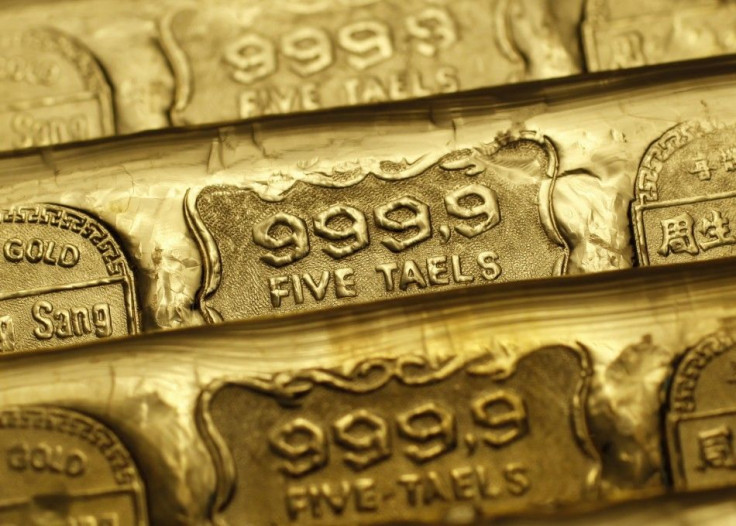Gold Price Manipulation: Bullion, Gold Stocks Undervalued - Report

Some industry experts believe the gold price has been artificially suppressed due to its strong impact on interest rates and government bond values, leaving many gold equities significantly undervalued.
One such expert is Bill Murphy, chairman of the Gold Anti-Trust Action Committee (GATA).
It's been an ongoing maneuver especially of late, Murphy told the International Business Times. There has never been an asset class that's been going up 12 years in a row.
Murphy believes the price of gold has been artificially low for the past 12 years as it has been manipulated by bullion trading banks, central banks with large gold holdings and the U.S. government.
This gold cartel only allows gold to advance so much in a year, Murphy said.
When you own gold, you're fighting every central bank in the world, geopolitical analyst James G. Rickards told CNBC during a September 2009 interview.
Echoing Rickards' view, Chris Powell, GATA's secretary and treasurer, said last year, Gold is a currency that competes with government currencies and has a powerful influence on interest rates and the value of government bonds.
To support his remarks, Powell cited an academic study published in 1988 in the Journal of Political Economy by Lawrence Summers, then professor of economics at Harvard and since then a U.S. treasury secretary, and Robert Barsky, professor of economics at the University of Michigan. The study is entitled Gibson's Paradox and the Gold Standard.
This close correlation among gold, interest rates, and government bond values is why central banks long have tried to control -- usually suppress -- the price of gold. Gold is the ticket out of the central banking system, the escape from coercive central bank and government power, Powell said.
As an independent currency, a currency to which investors can resort when they are dissatisfied with government currencies, gold carries the enormous power to discipline governments, to call them to account for their inflation of the money supply and to warn the world against it, Powell added. Because gold is the vehicle of escape from the central bank system, the manipulation of the gold market is the manipulation that makes possible all other market manipulation by government.
Paul Mylchreest, in his most recent issue of Thunder Road Report, offered a detailed analysis of what he sees as technically illegal and large scale manipulation of the gold market since the U.S. sovereign debt lost its AAA credit rating on Aug. 5, 2011.
Mylchreest, a former resource industry analyst, claims to show absolute proof of the existence of manipulation and how it is taking place. He used a succession of Kito daily gold price charts to back up his argument.
Source: Thunder Road Report
Based on the charts, Mylchreest argued that there are some obvious market sale algorithms in place which kick in virtually every time the gold price starts accelerating upwards.
According to Mylchreest, algorithms kick-in to sell gold contracts and prevent daily rises of more than 1 percent in the gold price on the Comex. If this fails, there's a fall back defense of 2 percent.
Gold hardly ever rises more than 2 percent in Comex trading, he wrote, adding that this isn't a new phenomenon and the aim is to keep speculative favor in gold at bay.
This fractal-like pattern of interventions within interventions happens at precise times on a regular basis, according to Mylchreest's observation.
The four most frequent attack times incorporated into the algorithms are at 8 a.m. London time (3 a.m. New York), 1:20 p.m., 3 p.m. and after 6:30 p.m.
The report also demonstrated a huge number of specific occurrences. Mylchreest went into great details explaining one of the events -- the Leap Day smash of gold and silver prices this Feb. 29.
On that day at 10:15 a.m. London time, the European Central Bank announced it made €529.5 billion ($712.4 billion) in low-interest loans to banks in the second round of massive credit infusion to ease the eurozone debt crisis. The gold market spiked up more than $5 per ounce on the news; however, almost immediately, the price pulled back down to a level lower than where it was prior to the rally.
The collapse began at exactly 3 p.m. London/10 a.m. New York time, Mylchreest wrote.
Murphy, GATA's chairman, said he expects gold will advance at least $3,000 an ounce to $5,000 an ounce.
When gold is under pressure like it is now, it's time for investors to be looking to accumulate on these dips, he said. It's setting up an investment opportunity of a lifetime.
Related: SPDR Gold Trust (NYSEARCA:GLD), Market Vectors Gold Miners ETF (NYSEARCA:GDX), iShares Gold Trust ETF (NYSEARCA:IAU), Market Vectors Junior Gold Miners ETF (NYSEARCA:GDXJ), Goldcorp Inc. (NYSE:GG), Barrick Gold Corporation (NYSE:ABX), Kinross Gold (NYSE:KGC), Agnico-Eagle (NYSE:AEM), IAM Gold (NYSE:IAG).
© Copyright IBTimes 2024. All rights reserved.












